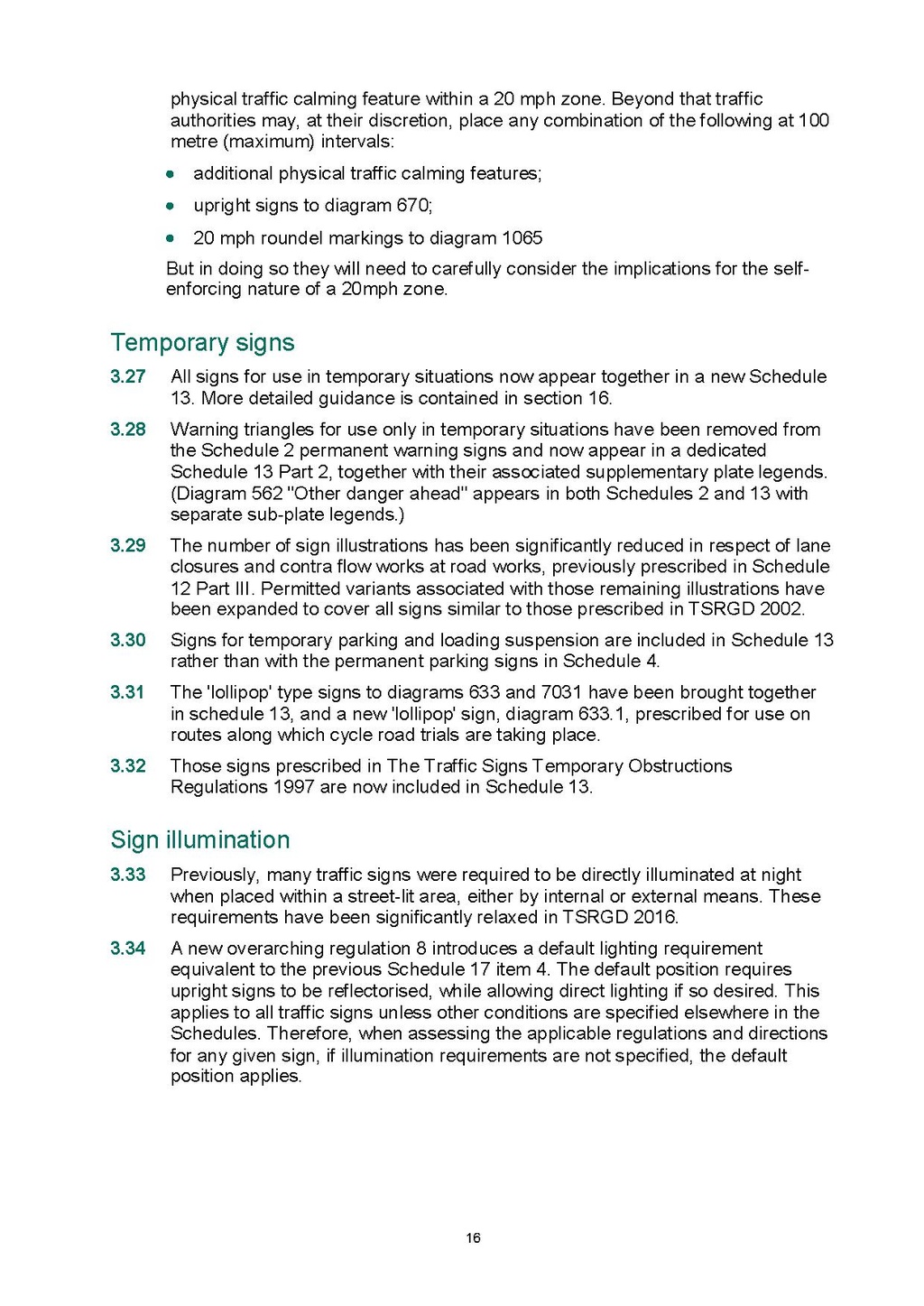This page has been validated.
physical traffic calming feature within a 20 mph zone. Beyond that traffic authorities may, at their discretion, place any combination of the following at 100 metre (maximum) intervals:
- additional physical traffic calming features;
- upright signs to diagram 670;
- 20 mph roundel markings to diagram 1065
But in doing so they will need to carefully consider the implications for the self-enforcing nature of a 20mph zone.
Temporary signs
3.27
All signs for use in temporary situations now appear together in a new Schedule 13. More detailed guidance is contained in section 16.
3.28
Warning triangles for use only in temporary situations have been removed from the Schedule 2 permanent warning signs and now appear in a dedicated Schedule 13 Part 2, together with their associated supplementary plate legends. (Diagram 562 "Other danger ahead" appears in both Schedules 2 and 13 with separate sub-plate legends.)
3.29
The number of sign illustrations has been significantly reduced in respect of lane closures and contra flow works at road works, previously prescribed in Schedule 12 Part III. Permitted variants associated with those remaining illustrations have been expanded to cover all signs similar to those prescribed in TSRGD 2002.
3.30
Signs for temporary parking and loading suspension are included in Schedule 13 rather than with the permanent parking signs in Schedule 4.
3.31
The 'lollipop' type signs to diagrams 633 and 7031 have been brought together in schedule 13, and a new 'lollipop' sign, diagram 633.1, prescribed for use on routes along which cycle road trials are taking place.
3.32
Those signs prescribed in The Traffic Signs Temporary Obstructions Regulations 1997 are now included in Schedule 13.
Sign illumination
3.33
Previously, many traffic signs were required to be directly illuminated at night when placed within a street-lit area, either by internal or external means. These requirements have been significantly relaxed in TSRGD 2016.
3.34
A new overarching regulation 8 introduces a default lighting requirement equivalent to the previous Schedule 17 item 4. The default position requires upright signs to be reflectorised, while allowing direct lighting if so desired. This applies to all traffic signs unless other conditions are specified elsewhere in the Schedules. Therefore, when assessing the applicable regulations and directions for any given sign, if illumination requirements are not specified, the default position applies.
16
